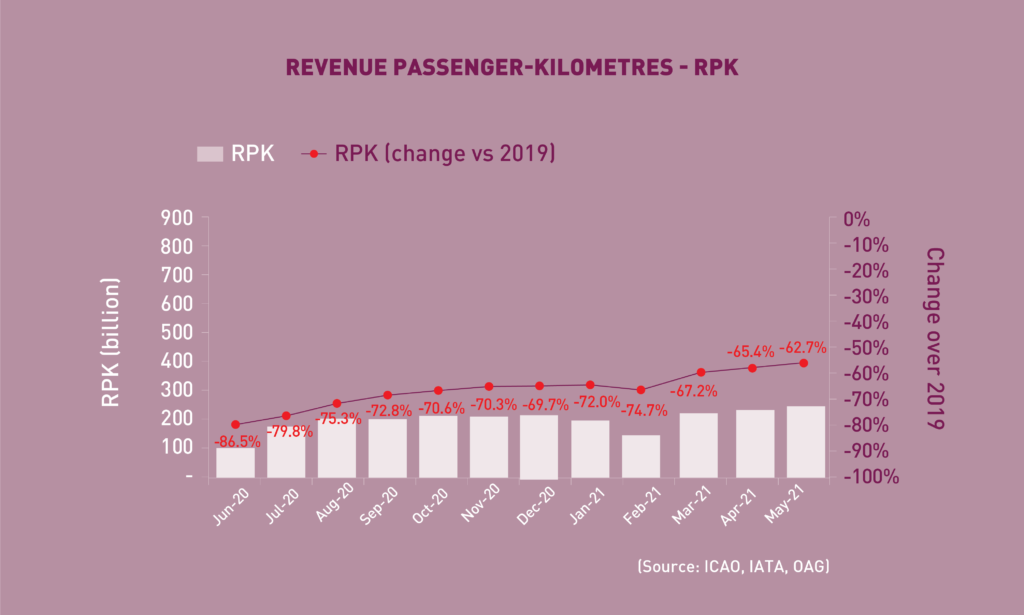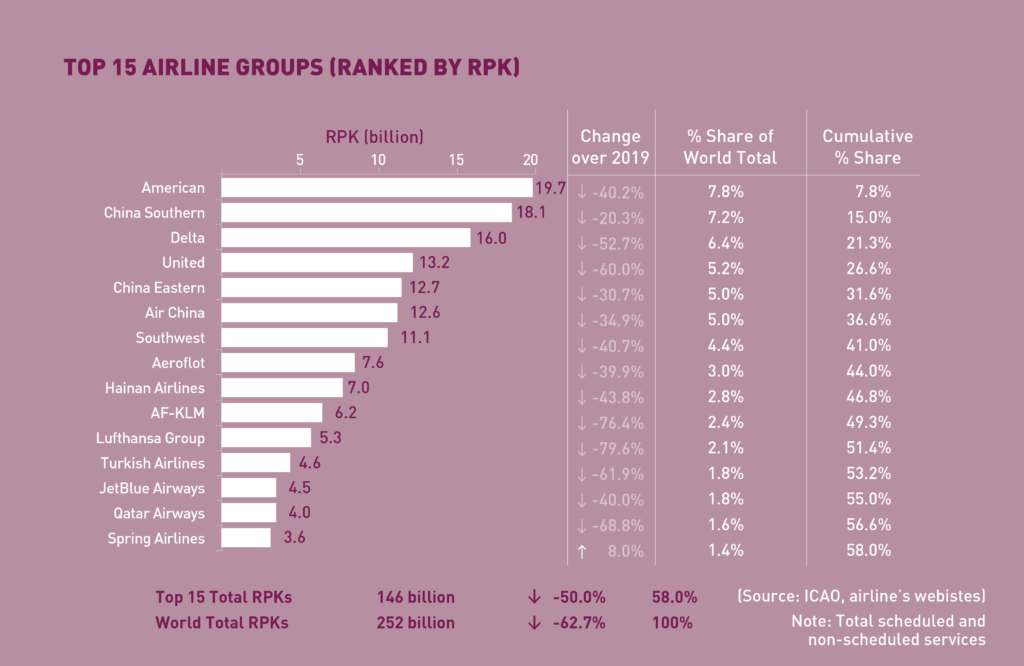The air transport industry is not only a vital engine of global socio-economic growth, but it is also of vital importance as a catalyst for economic development. Not only does the industry create direct and indirect employment and support tourism and local businesses, but it also stimulates foreign investment and international trade.
Informed decision-making is the foundation upon which successful businesses are built. In a fast-growing industry like aviation, planners and investors require the most comprehensive, up-to-date, and reliable data. ICAO’s aviation data/statistics programme provides accurate, reliable and consistent aviation data so that States, international organizations, aviation industry, tourism and other stakeholders can:
- make better projections;
- control costs and risks;
- improve business valuations; and
- benchmark performance.
The UN recognized ICAO as the central agency responsible for the collection, analysis, publication, standardization, improvement and dissemination of statistics pertaining to civil aviation. Because of its status as a UN specialized agency, ICAO remains independent from outside influences and is committed to consistently offering comprehensive and objective data. Every month ICAO produces this Air Transport Monitor, a monthly snapshot and analysis of the economic and aviation indicators.
ECONOMIC DEVELOPMENT – July 2021
World Results and Analyses for May 2021
Total Scheduled Services (Domestic and International)
Passenger traffic
 Revenue Passenger-Kilometres – RPK
Revenue Passenger-Kilometres – RPK
World passenger traffic fell by -62.70% in May 2021 (compared to 2019), +2.7 percentage points up from the decline in the previous month. Air travel demand has been recovering moderately as the total number of new COVID-19 cases stabilized. Nevertheless, the growing spread of the Delta variant has hit many countries and raises major concerns in relaxing travel restrictions. Domestic air travel demand remained the driving force for travel recovery. Both domestic traffic of China and the Russian Federation has recovered to pre-pandemic levels.
 International Traffic vs. Tourist Arrivals
International Traffic vs. Tourist Arrivals
International passenger numbers fell by -84.5% in May 2021 (compared to 2019), +2.3 percentage points up from the decline in the previous month. International travel is much more affected by new virus variants and travel restrictions. Asia/Pacific was the slowest recovering region, followed by Europe and the Middle East. The international tourist arrivals also remained stagnant and followed a similar trend as international passenger traffic.
Capacity
 Available Seat-Kilometres – ASK
Available Seat-Kilometres – ASK
Capacity worldwide fell by -53.7% in May 2021 (compared to 2019), +0.8 percentage point up from the decline in the previous month (-54.5%). With the modest improvements in travel demand, capacity is expected to increase in June 2021 to -51.4% down from the 2019 level.
Load Factor
The passenger Load Factor reached 65.8% in May 2021, +2.5 percentage points higher than the previous month. Improvement in domestic load factor is more noticeable and returned to over 75%. As the recovery of capacity was faster than travel demand recovery, the May LF was -15.7 percentage points lower than the rate in the same period of 2019.
Freight Traffic
 Freight Tonne-Kilometres – FTK
Freight Tonne-Kilometres – FTK
World freight traffic reported a growth of +9.4% in May 2021 (compared to 2019), -2.6 percentage points lower than the growth in the previous month. Despite the fluctuation in growth pace from month to month, the performance of air cargo remained strong overall and the global economic recovery together with the roaring e-commerce activities continued to be supportive. All regions recorded slight moderation in air cargo growth, except for Latin America/Caribbean which saw a significant rebound, however, remained as the only region showing contraction from the pre-pandemic levels. North America contributed the most to the positive global traffic growth and expanded remarkably at over +20%.
Top 15 Airports (Ranked by aircraft departures, passengers, and volume of freight)
Note: Figures include total scheduled and non-scheduled services
May 2021: –16.3%, -24.9%, and +13.9% (vs. 2019) in terms of aircraft departures, passengers and freight for the Top 15
In terms of aircraft departures, the Top 15 airports reported a combined fall of -16.3%, compared to 2019. The Top 15 list consists of eleven (11) US and four (4) Chinese airports. Atlanta remained 1st with a decline of -22.4%. Chengdu and Guangzhou were the only two airports posting increases, +4.5% and +1.8%, respectively.
In terms of passengers, the Top 15 airports posted a total fall of -24.9%, compared to 2019. Only US (9) and Chinese (6) airports ranked within Top 15. Atlanta and Dallas/Fort Worth took over Guangzhou and became 1st and 2nd, albeit with -30.8% and -16.9% decline, respectively. Chengdu was the only airport posting increase at +5.0%. On the contrary, Beijing recorded the largest fall at -48.6%.
In terms of freight, the Top 15 airports reported an increase of +13.9%, compared to 2019. Dubai continued to be the only airport posting decline (-3.7%). With an increase of +1.6%, Hong Kong surpassed Memphis at +0.1%, and regained the 1st. For the fourth consecutive month, Chicago recorded the strongest increase at +42.4%.
Top 15 Airline Groups (Ranked by RPK)
May 2021: -50.0% (vs. 2019) in terms of RPK for the Top 15
In terms of RPK, the Top 15 airline groups accounted for 58.0% of the world’s total RPK in May 2021 and declined by –50.0% compared to 2019. This decline was 12.7 percentage points smaller than the fall in world’s average RPK. Airlines with large domestic markets continued to lead the growth chart.
US airlines have been recovering steadily. American regained the 1st position with a decline of -40.2%, compared to 2019. Both Delta and United improved two positions to 3rd and 4th, while remained at over 50% below the 2019 RPK levels. Southwest stayed at 7th, and for the first time, JetBlue also ranked within Top15 at 13th.
Chinese airlines demonstrated relatively faster recovery, nevertheless with a light slowdown in pace. China Southern ranked 2nd with RPKs at -20.3% below 2019 levels. China Eastern and Air China moved 1 position and 3 positions down to 5th and 6th, respectively. Spring Airlines continued to be the only airline posting positive growth and grew solidly at +8.0%.
Recovery of airlines in Europe remained the weakest. Lufthansa and AF-KLM recorded the largest contractions from 2019 levels. Aeroflot and Turkish Airlines showed relatively better performance at -39.9% and -61.9%, respectively.
Qatar, the only Top15 airline from the Middle East region, improved slightly but ranked 1 position down to 14th with -68.8%.
Worldwide capacity contracted by -53.7% in May 2021, compared to 2019. All regions saw improvements in capacity compared to the previous month, except for Asia/Pacific. Capacity offered in North America showed the fastest recovery to 66% of 2019 levels, followed by Asia/Pacific at close to 50%. Europe continued to record the slowest capacity recovery.
Click here to download the Monthly Monitor July PDF version.
For any queries for further information, please contact the ICAO Economic Development (ECD), Air Transport Bureau ecd@icao.int
Acronyms: ACI: Airports Council International; ASK: Available Seat-Kilometres; IATA: International Air Transport Association; FTK: Freight Tonne-Kilometres; LF: Passenger Load Factor; OAG: Official Airline Guide; RPK: Revenue Passenger-Kilometres; UNWTO: World Tourism Organization; YoY: Year-on-year; YTD: Year-to-date.







